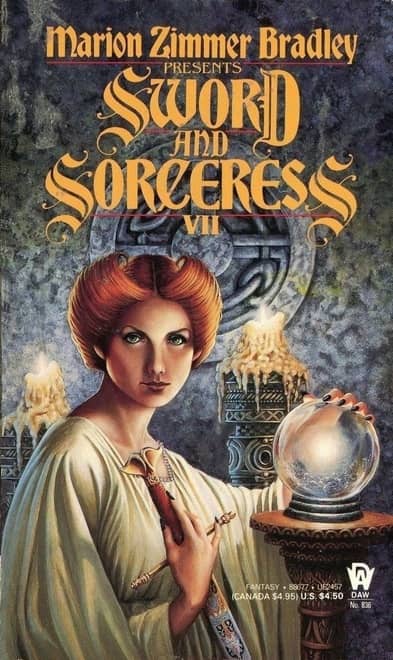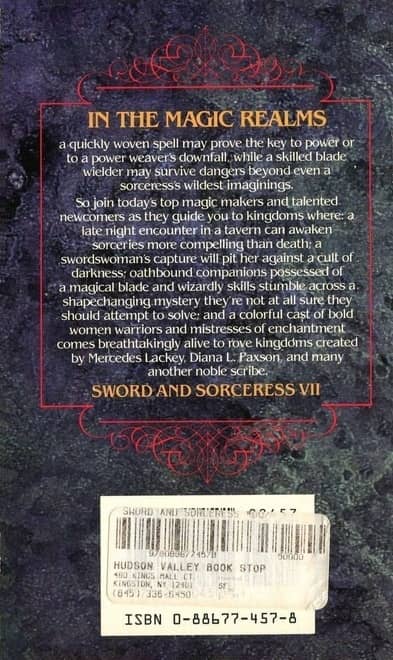Lost and Found Treasure
 |
 |
A few weeks ago, I was cruising Facebook when I stopped up short at a familiar image.
It was on our esteemed editor John O’Neill’s wall. And as is often the case with such things, I was struck by a wealth of memories. I received Sword and Sorceress VII as a gift for my 12th birthday. It was probably bought at the B. Dalton in College Mall in Bloomington, IN, one of two easily accessible bookstores on that side of town back in 1990. (Before anyone does the math too fast, yes, I’m celebrating a big birthday next year. It’s in May, if you want to send gift cards for more books.)
I couldn’t tell you exactly which stories were in this volume. I know it had one of Mercedes Lackey’s “Tarma and Kethry” tales in it, but beyond that none of them stand out alone. But as a whole, that volume changed my life as a reader. While I’d feasted on the The Chronicles of Narnia, Robin McKinley, and Susan Cooper, this book was my first exposure to fantasy for grown-ups. And it was full of women.
When I think casually, 1990 doesn’t feel that far away. But in terms of the way women were portrayed in fiction it was another era entirely, and in ways I can’t even begin to explain unless you were there.
This was before Xena. Before Buffy. Before Sydney Bristow. Hell, this was two years before Tim Burton gave Catwoman a whip and let her use it. (Julie Newmar got to hold one as a prop, but didn’t put it to use.) Red Sonja had come in out 1985, and the first of Tamora Pierce’s Lioness Rampant series had come out in 1982. But much beyond that fantasy with strong women leading the charge were incredibly thin on the ground.
The Sword and Sorceress series was part of the change that began in the late 80s. And as a 12 year old girl, reading this volume fundamentally shaped my expectations. And I wasn’t alone: the collection remained one of Del Rey’s best sellers for much of the next decade. It’s success helped prove to publishers that there was a real desire for women characters in print.
And while I can’t claim to be content with the state of women’s portrayal in modern fiction, it’s a far sight better than it was in 1990. Whatever else we lay at her feet, and she’s the very essence of a conflicted legacy, Marion Zimmer Bradley’s work as an editor helped bring that change about.
Elizabeth Cady’s last post for Black Gate was her review of Every Heart a Doorway by Seanan McGuire.
This is part of Marion Zimmer Bradley’s legacy, and let’s not forget that.
https://www.amazon.com/dp/B0787XLK4H/?tag=id2100-20
Yes, that was rather my point. I see her as a really, execrable human being who happened to produce some of the most important fantasy of the 80s. Without her, I’m not sure where we would be as a genre. But yes, she was a horrific human being.
SWORD AND SORCERESS series was published by D.A.W. Books, not Del Rey.
Not to make any comment on the rest of the book mentioned in the first comment, but:
Reading the foreword in the Amazon sample and thinking, “Boy, this writer is an idiot.” Get to the end of foreword and see who it is, “Ah, that explains it.”
Oh yeah. And her daughter Moira has become virulently homophobic as a result of her treatment. I can’t summon any anger over it, though. I usually would: my family and friends group (and myself) are heavily slanted towards Team Q. But man, I can forgive her this one, at least to the degree that I can’t summon any anger against her over it.
Vox, on the other hand… Him I’ve got a double dose for.